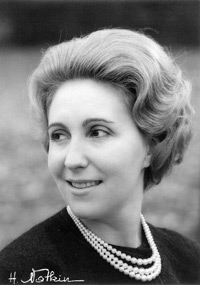International RecognitionFrench, Parisian, english-speaker, she was 37when she discovered the United States. Figurative, post-impressionist, she painted with a palette knife. Her success in the United States was instantaneous. |
||
|
In 1963, Théobald's career took a new turn. After Munich and Frankfort, she exhibited twenty-four of her paintings in Paris depicting the United States and Greece. She was then invited by the De Young Museum in San Francisco to present forty landscapes, orchestras, and Paris streets.
The following year, Renée Théobald's art was exhibited in New York for the first time. The press responded well. This would mark the beginning of an American career that would last more than forty years, between New York, Washington, Palm Beach, Beverly Hills, San Francisco, Dallas, and Houston. She would travel yearly to the United States, where she developed many friendships. She appreciated the American enthusiasm, praised the American optimism, pragmatism, and capacity to imagine grand things. She forever remained loyal to the memory of those who, when she was a young woman, liberated Paris. During the 1970's and the 1980's, in parallel to individual art shows in the United States, her art was exhibited in Helsinki, Finland, then in Stockholm, Sweden, and in Tokyo, Japan. Thus, at a time when the abstract art revolution dominated the museum's catalogs and fed the critiques' articles, she affirmed her figurative style, following the Paris school. France was glorifying the new, modern painters who chose abstract expression. Théobald kept her own language, and her artwork thus transcended borders. In 1977, Renée Théobald remarried and continued to live in Paris. |
||





